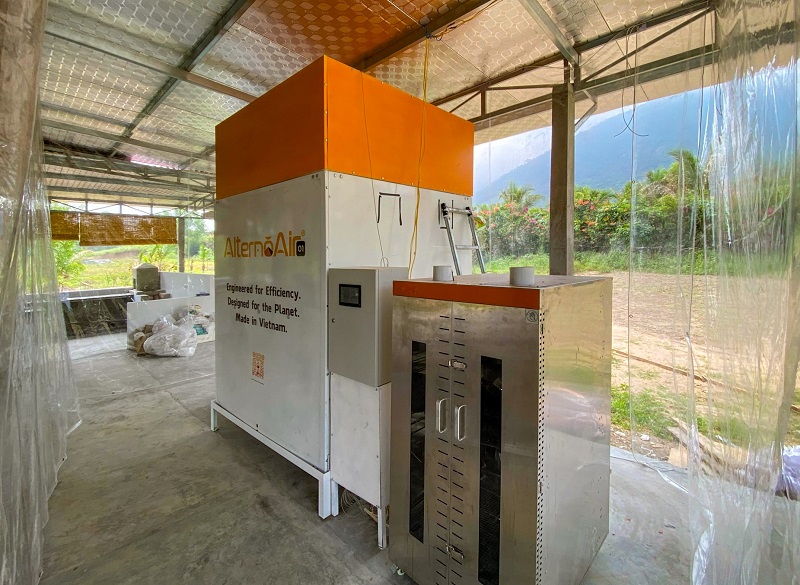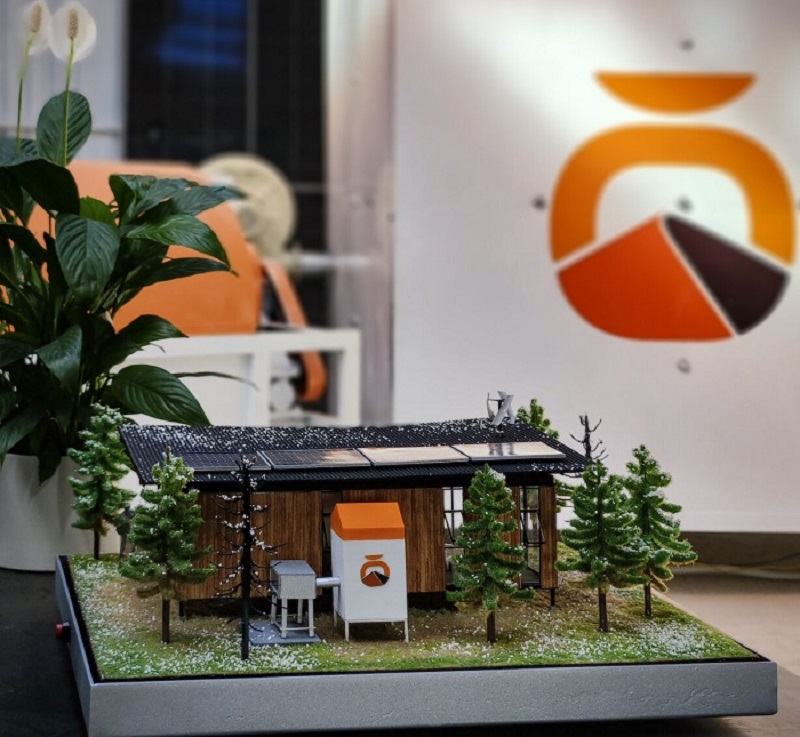In today’s technological world, sand battery are becoming a promising solution for renewable energy devices. With superior energy storage capacity, sand batteries not only help reduce emissions but also provide higher efficiency than traditional batteries. Environmentally friendly materials and recyclability are also big pluses for this type of battery. Let’s explore in more detail about sand battery technology and its advantages and disadvantages in this article by Alternō!
1. What is a sand battery and how does it work?
Sand battery is a type of high-temperature energy storage battery that uses sand as the main material as the storage medium. Unlike other types of batteries, sand batteries have a simple structure and low production cost, thanks to abundant and easy-to-find raw materials. Excess energy is stored in sand in the form of heat.

Sand batteries act as high-capacity thermal storage to store excess solar or wind energy. Therefore, they can be used for heating or providing heat and steam for industrial and agricultural processes that require high temperatures. Sand batteries not only help optimize excess energy sources but also do not emit carbon, minimizing environmental pollution.
2. Pros and Cons Of Sand Energy Storage Solutions
Sand batteries are an innovative storage solution. Here are its advantages and disadvantages:
2.1. Pros
The advantages of sand batteries include:
- Cost-effective: Sand is an abundant, inexpensive, and easy-to-find raw material, which reduces production costs compared to traditional batteries.
- Scalability: They can store large amounts of thermal energy, making them suitable for managing excess renewable energy sources.
- Withstand high temperatures: Sand can be heated to higher temperatures than other storage media, such as water.
- High energy storage efficiency: With advanced technology, sand batteries can store energy efficiently, meeting the electricity consumption needs of manufacturing enterprises.
- Environmentally friendly: They do not require toxic materials or rare minerals. Sand batteriesuse natural materials and are highly recyclable, contributing to minimizing negative impacts on the environment.
- Safety: Compared to many other types of batteries, sand batteries do not have the risk of explosion or leakage of toxic chemicals, providing peace of mind for users.
- Long life: Sand batteries are capable of withstanding multiple charge and discharge cycles without significant performance degradation, increasing their durability and feasibility in long-term use.

2.2. Cons
While sand batteries offer numerous benefits, it’s important to consider a few aspects when choosing this solution:
- Energy efficiency: Sand batteries typically store and convert energy differently than lithium-ion batteries, which may result in slightly lower efficiency for certain applications.
- Specific applications: Sand batteries are ideal for applications that require large-scale, stationary energy storage.
- Design and size: Due to their high storage capacity, some sand batteries may have a larger and heavier design.
3. Frequently asked questions about sand battery
3.1. Where should I buy sand batteries?
Alternō is one of the leading suppliers of sand batteries that you can refer to. With a commitment to providing advanced and environmentally friendly renewable energy products, Alternō not only provides genuine sand batteries at reasonable prices but also ensures high quality and performance. The team of professional consultants here will help you choose the product that best suits your needs. Contact Alternō to experience and invest in a sustainable future!
3.2. What is the structure of sand storage?
The sand battery is researched and designed with a battery shell, insulation layer, and sand mixed with components that support heating and heat conduction. Sensors located between the smart chip in the core and the sand layer help users monitor the battery’s performance, discharge, and charge.
3.3. Can sand batteries be used for home energy storage?
Yes, sand batteries can potentially be used for home energy storage. These innovative systems store energy by heating sand to high temperatures, which can then be retained for long periods. When energy is needed, the heat can be converted back into electricity.
3.4. How long does the sand stay hot in the winter?
It can retain heat for months. Insulation plays an important role in extending the heat retention time, limiting heat loss to the outside. In a solar energy integration system, sand can retain high temperatures in cold weather, ensuring enough heating. However, the exact storage time may vary, depending on the level of use.
In short, sand batteries are opening up a bright future for sustainable energy storage technology. With the continuous development of technology, sand batteries promise to make an important contribution to the future of clean energy, helping to reduce pollution and protect the planet for future generations. Contact Alternō to learn how sand batteries can revolutionize your energy storage solutions and contribute to a cleaner future!
- Alternō : Tầng 6 & 7 Friendship Tower, 31 Lê Duẩn, Quận 1, TP.HCM
- Hotline: 0888 617 000
- Zalo: 0888 617 000
- Mail: vietnam@alterno.group
- Website: https://alterno.net



 Tiếng Việt
Tiếng Việt


